The history of Bulgaria is important to understand with a brief summary the Bulgarian past and its present. A fascinating Balkan land , with a rich history full of contamination thanks to the peoples who have succeeded one another. From the Thracians to the Odrysians, passing through the Persians, Romans and Slavs. In fact, here there are cultural traces of the heritage of these peoples, as of the Hellenic civilization . Arriving at the proclamation of the Bulgarian People’s Republic in 1946. Let’s discover its history together in brief in our summary, understanding the country better during your trip to Bulgaria!
The History of Bulgaria
To understand the present it is important to know the past thanks to a summary of the history of Bulgaria in brief. Bulgarian history is complex , characterized by periods of light and darkness, as well as having undergone the influences of various populations. The first human settlements date back to the Paleolithic , the Thracians, Greeks and Romans followed one another in the area for centuries, leaving their identity here. The proto-Bulgarians, a Turkish lineage, founded the First Bulgarian Empire in 681 AD ; important power in the Balkans. Following its decline, the second Bulgarian Empire was born in 1185, reaching its maximum splendor with Tsar Ivan Asen II . In 1396 the country was conquered by the Ottoman Empire, maintaining dominion for five centuries. A period characterized by cultural and religious pressures, while maintaining the traditions of the Bulgarian people intact.
From 1877 to 1878 the Russian-Turkish war led the country to independence , leading in the 20th century to the Balkan wars, as well as the First and Second World Wars. From 1946 to 1989 we arrive at the communist regime and, following the fall of the Berlin Wall , the transition to democracy . Today, Bulgaria is a parliamentary republic and a member of NATO and the European Union. It still retains deep-rooted traditions, as well as a wonderful historical, landscape and cultural heritage . Furthermore, it is also a popular destination for seaside tourism, thanks to its locations overlooking the Black Sea. So let’s delve deeper into the history of Bulgaria in our summary, preparing ourselves as best we can for our trip!
Click the button and find all search platforms and book your next trip yourself.
Read also: What to buy in Bulgaria? – Souvenir Bulgaria
The phases of Bulgarian history
| Period | Epoche Storiche |
|---|---|
| Prehistoric age | 1.6 million years – 1500 BC |
| Give the Thracians to the Romans | 1500 BC – 7th century |
| Bulgarian Middle Ages | 7th century – 681 |
| First Bulgarian Empire | 681 – 1018 |
| Byzantine government | 1018 – 1185 |
| Second Bulgarian Empire | 1185 – 1422 |
| Ottoman government | 1422 – 1878 |
| Independent Bulgaria: the third state | 1878 – 1946 |
| People’s Republic of Bulgaria | 1946 – 1990 |
| Democratic Bulgaria | 1990 – … |
Bulgarian prehistory
The history of Bulgaria begins about 1.6 million years ago , as it was possible to estimate from the finds found in the Kozarnika cave . This, moreover, is among the most significant findings of human behavior ever found. Furthermore, human remains dated to 46,000 years ago were found in the Magura cave . The first houses that appeared in Bulgarian territory were in the Neolithic period in Stara Zagora , around 6,000 BC; among the oldest human habitations ever discovered. Subsequently, the Vinča and Hamangia cultures developed between Bulgaria, eastern Serbia and southern Romania. Solnicata , one of the oldest European urban gatherings, was found in Bulgaria.
During the Copper Age, in 5,000 BC, the Varna culture developed , an example of the first societies, above all thanks to the burials and finds found. The Varna gold , rings, bracelets and weapons found in a tomb, date back to around 4,600 BC and is the oldest gold hoard in the world . At the same time, the Karanovo culture , the caliber of the prehistoric Balkans, developed . In the Ezero culture , however, cultivation and the domestication of animals developed and rock engravings from the period that were difficult to date were found in the Magura cave.
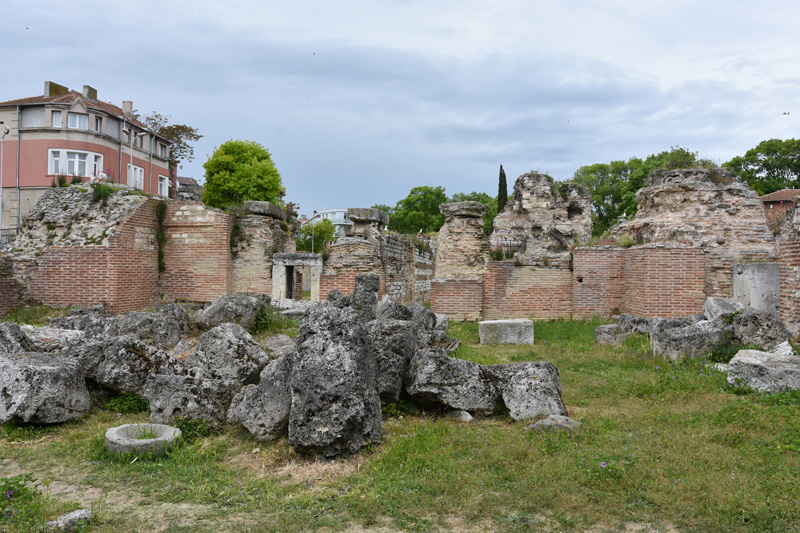
Antiquity
I Traci
The first peoples to leave their mark in Bulgarian history were the Thracians, a people whose origins are still shrouded in mystery, probably developed by the Indo-European peoples in the Bronze Age. From 1,500 BC . they imposed themselves on the territory and the people present. A poorly organized people, without a writing system or skills, which they learned from the present people, such as gold working. However, they acquired military strength, forming tribes but never achieving unity, but only brief governments in fortified villages.
While cities like Apollonia and Byzantium were colonized by the Greeks, the first Greek colonies in Thrace began in the 8th century BC. Until King Teres the tribes were divided, then unified in the kingdom of the Odrysians in around 500 BC. The maximum splendor was reached with kings Sitalces and Cotys I. In the Peloponnesian War , king Sitalces allied himself with the Athenians and invaded the kingdom of Macedonia in 429 BC with warriors from the Thracian tribes. Instead, Cotys I goes to war with the Athenians to take today’s Gallipoli peninsula . The Macedonian kingdom then incorporates the Odrysian kingdom and the Thracians become part of the expeditions of both Philip II and then Alexander the Great.
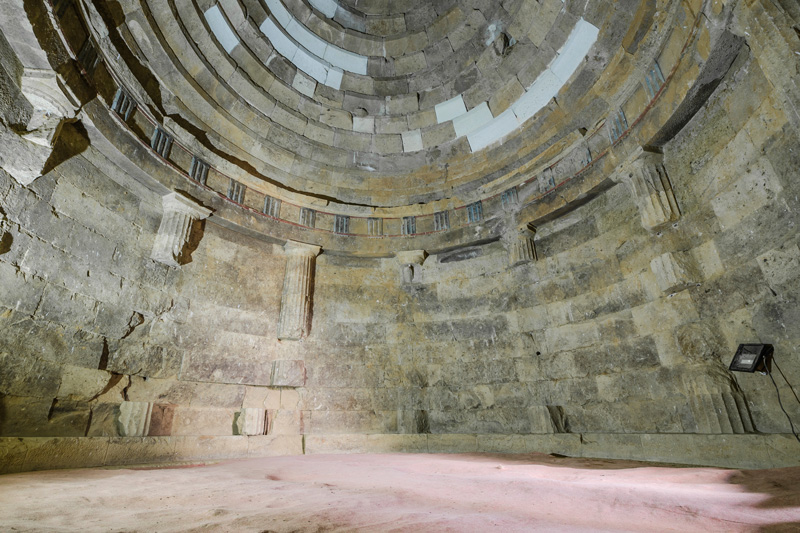
The Kingdom of Tylis
In short, the history of Bulgaria around 298 BC sees the arrival of the Celtic tribes , clashing with the troops of the Macedonian Cassander I in the Balkan mountains, seeing the Macedonian victory. However, this did not stop the Celts, encountering the Thracian tribes weakened by the Macedonians, they quickly fell. Led by Comontorius , in 279 BC the Celtic army attacked Thrace and conquered it, founding the kingdom of Tylis , in the area of eastern Bulgaria, towards the village of Tulovo . Important finds from this period have been found, such as the Gundestrup cauldron and Mezek’s chariot.
This kingdom lasts until 212 BC, when the Thracians regain control of the region and dissolve the kingdom. The remaining Celts took the name Serdi , thus giving the name Serdica , ancient Sofia. Only at the end of the 3rd century BC does a new threat arrive for the Thracians…
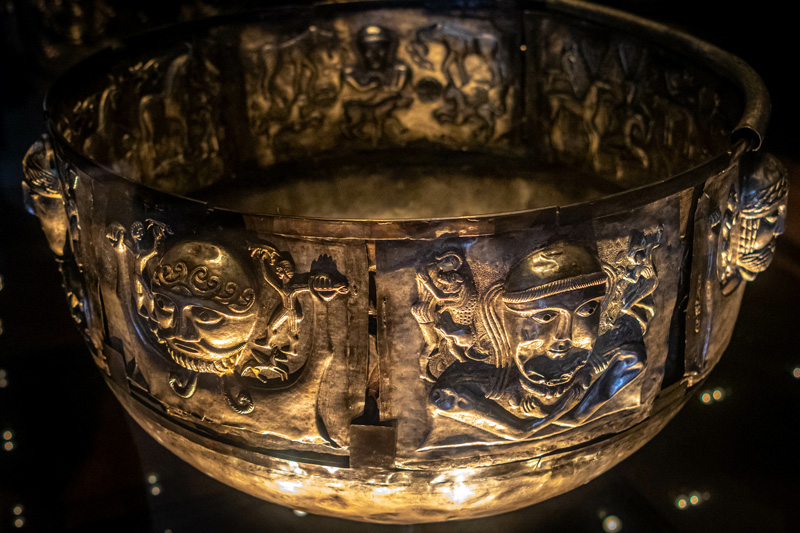
The Roman Empire
In 188 BC during Bulgaria’s short history, the Romans invaded Thrace in a war that lasted until 46 BC. Rome took control and, in 46 AD, founded Thrace . The Thracians in the 4th century AD were a varied identity, converted to Christianity, but maintaining pagan rites. The dominant group were the Thraco-Romans , seeing emperors such as Constantine I and Galerius . Especially in today’s Sofia, urban centers developed, thanks to the presence of waterways and the culture was enriched by the migratory and cultural flow . Temples dedicated to Isis and Osiris have been found on the coasts of the Black Sea . Diocletian in the 3rd century AD divided Thrace into four, seeing it in the 4th century AD . the active Goths in northern Bulgaria during its history in brief.
Ulfilas , a Gothic bishop, translated the Bible from Greek, creating the Gothic alphabet: the first book written in the Germanic language by the man who is considered the father of Germanic literature . Since the people of today’s Bulgarian territories were rural in nature at the time, Roman control was difficult and always weak. The Huns led by Attila in the 5th century begin the invasion, weakening the Romans. At the end of the 6th century, raids to plunder the Avars in the north were numerous, preparing the ground for the arrival of the Slavs . In this century the Greco-Roman culture was still strong, but the Christian one dominated. By the 7th century, Greek was the main language, replacing Latin socially and religiously.
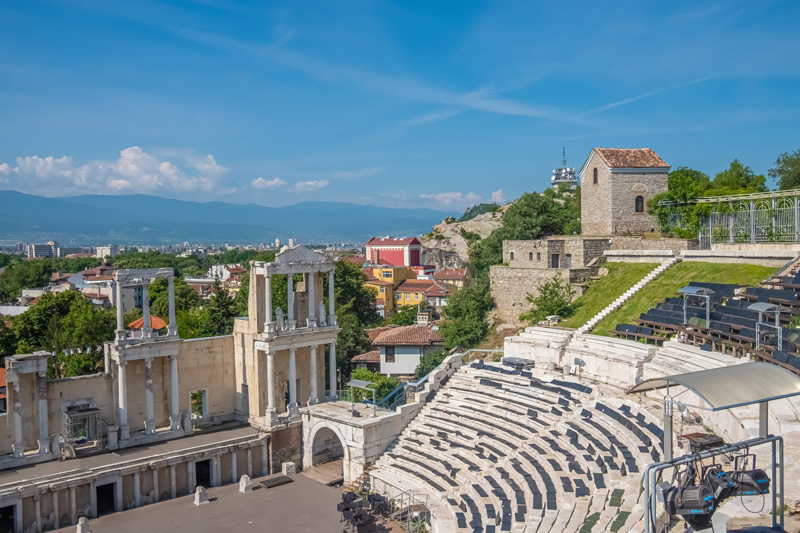
The Bulgarian Middle Ages
During the history of Bulgaria in our summary, the beginning of its Middle Ages is characterized by the arrival of the Slavs, the proto-Bulgarians and the birth of Greater Bulgaria. Thus arriving at the First Bulgarian Empire.
The Slavs
The Slavic peoples are an Indo-European group, initially moved to the Balkans. During the history of Bulgaria in brief, the Slavs expanded from Eastern Europe from the 6th century AD , spreading to the eastern and central areas, especially in the Balkans, dividing themselves into Western, Eastern and Southern Slavs; these settled in Bulgarian territory in the 6th century. Hellenising or Romanising , only a few traces of Thracian groups remained in more remote areas until the 5th century, being assimilated into Slavic culture, then incorporated by the proto-Bulgarians .
I proto-bulgari
Initially during the history of the Bulgarians they were semi-nomadic tribes of Iranian and Turkish origin, coming from the Eurasian steppe. From the 2nd century AD they settled in the steppe between the Caspian Sea and the Black Sea, on the banks of the Volga and north of the Caucasus. Those who emigrated to the northern coasts of the Black Sea founded Greater Bulgaria on the Balkan Peninsula. Thus the First Bulgarian Empire was born . Power was in the hands of hereditary khans , then divided into aristocratic families, who in turn possessed military titles, dividing themselves into classes. The religion was polytheistic and Tangra , the sky god, was the highest deity.
The birth of Greater Bulgaria
Uniting the largest tribes of proto-Bulgarians during the brief history of Bulgaria, khan Kubrat in 632 forms the state called Onoguria : Great Bulgaria. Located between the Danube in the west, the Black Sea and the Sea of Azov, the Kuban River and Donets, with Fanagoria as its capital. Kubrat, with the Byzantine emperor Heraclius I signed a peace treaty in 635 , expanding the kingdom into the Balkan peninsula. With his death, however, the proto-Bulgarian kingdom was defeated by the Khazars, dissolving Great Bulgaria in the 7th century and seeing the migration of the proto-Bulgarians. Kotrag , the khan’s successor, leads the nine remaining tribes north, along the Volga and Kama in the 7th century, towards modern-day Russia. The kingdom of the Volga Bulgarians is born , the cultural and commercial center of the north, trade begins with the Norse, Avars and Arabs.
But the Mongol invasions continued, destroying the kingdom of the Volga Bulgarians. The surviving Bulgarian tribes took refuge in Italy, near Naples , or with the Lombards , others remained near the Black Sea and Azov , but were overwhelmed by the Khazars , converting to Judaism in the 9th century, later assimilated by the local people. khan Asparuh , brother of Kotrag, went west, occupying southern Bessarabia. In 680 he won against the Byzantines, then conquered Dobruja and Moesia, signing a treaty recognizing the independent state in 681, the year Bulgaria was founded and Asparuch became the first sovereign. Kuber, another brother of the khan, settled first in Pannonia and then in Macedonia.
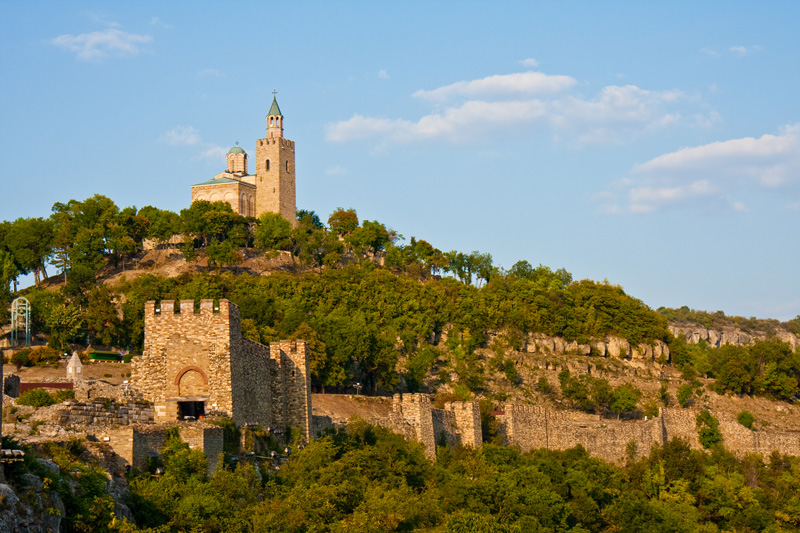
The First Bulgarian Empire
During the history of Bulgaria in our summary, under the late Roman Empire , the country’s current territory was divided into provinces: Scythia, Moesia, Macedonia, Dacia, Thrace and Dardania. Between the 6th and 7th centuries, new Slavic populations arrived , changing the demographics radically with the Slavicization of the territory. In the 8th century Justinian II , Byzantine emperor, forms a union with Khan Tervel to counter the Arabs to the south. By defeating the khan he took the title of Caesar . With Khan Krum, Bulgaria expanded its borders to the north and south, occupying the lands of the Danube and the Vltava, today in Romania . In 809 it occupied what is now Sofia and Adrianople in 813, thus coming into conflict with Constantinople . Krum also strengthened his state with reforms.
With Khan Omurtag , however, the northern borders were set on the middle banks of the Danube, building palaces, luxurious residences and pagan temples, spas in Pliska , then the capital. From 852 to 889, under the government of Boris I, the Bulgarians converted to Christianity, with an autonomous archbishopric in Pliska granted by Constantinople. Saint Cyril and Saint Methodius, two missionaries, developed the Glagolitic alphabet , adopted in 886. This was also the birth of the flourishing Bulgarian literary activity thanks to the school School of Ohrid and Preslav. In the 9th century the Cyrillic alphabet developed.
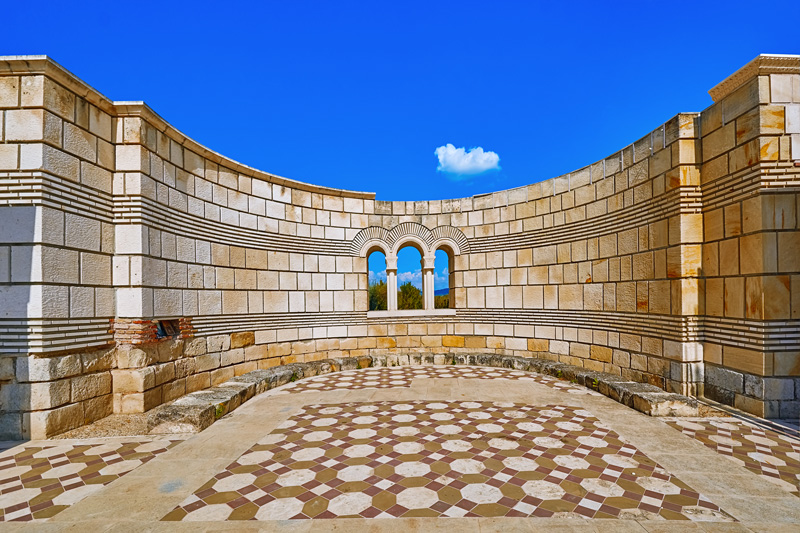
The Bulgarian-Byzantine wars
At the end of the 9th century , during the history of Bulgaria in the summary the territory expands from Epirus to Thessaly and Western Bosnia, controlling the current territory north of Romania. Under Simeon the Great the country once again became a threat to the Byzantine Empire, targeting Constantinople to become emperor of the Greeks and Bulgarians. Thus began the Bulgarian-Byzantine wars during his reign which lasted from 893 to 972. The southern borders reached the Peloponnese, making the state the most powerful in Eastern Europe.
Simeon became Tsar of the Bulgarians and Greeks , a title also recognized by the Pope, but not by the Byzantine Emperor. The capital Preslav was a rival of Constantinople at the time but, with the death of Simeon, Bulgaria was again weak due to wars with Croats, Magyars, Serbs and Pechenegs. Furthermore, Bogomilism as a creed spread . Two attacks by Kievan Rus’ and the Byzantines led to the Byzantine conquest of Preslav in 971 . With Samuele , however, Bulgaria managed to recover, conquering Duklja and Serbia.
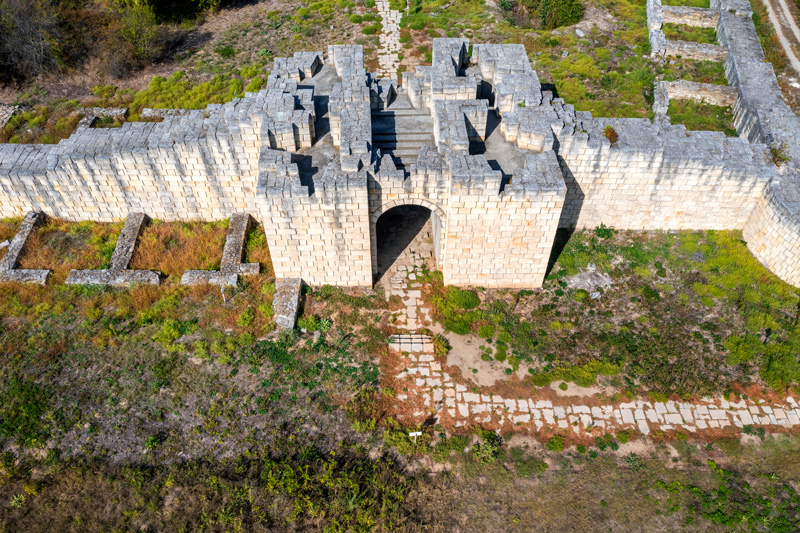
In Byzantine Bulgaria
With the campaigns to conquer Bulgaria by the Byzantine emperor Basil II during his short history in 986, after decades in 1014 he succeeded in his goal. Ivan Vladislav , the last Bulgarian tsar, in 1018, with the Bulgarian nobility, decides to join the Eastern Roman Empire. Bulgaria thus loses its independence , subjected to Byzantium for more than a century and the church returns under the Byzantine ecclesiasts. There are not too many traces of Bulgarian resistance or popular uprisings against Byzantine rule, probably thanks to the concessions that Basil II gave to the Bulgarian nobility for loyalty.
With his death, in 1040 Peter Deljan organized a revolt, but was killed. Byzantine power passes to the Komnenians , thus interrupting the decline of the empire and beginning a time of progress and stability. Manuel I, the last descendant of Komneni, dies in 1180, replaced by the Angel dynasty . The incompetence of the new dynasty allows the Bulgarians to organize for an uprising.
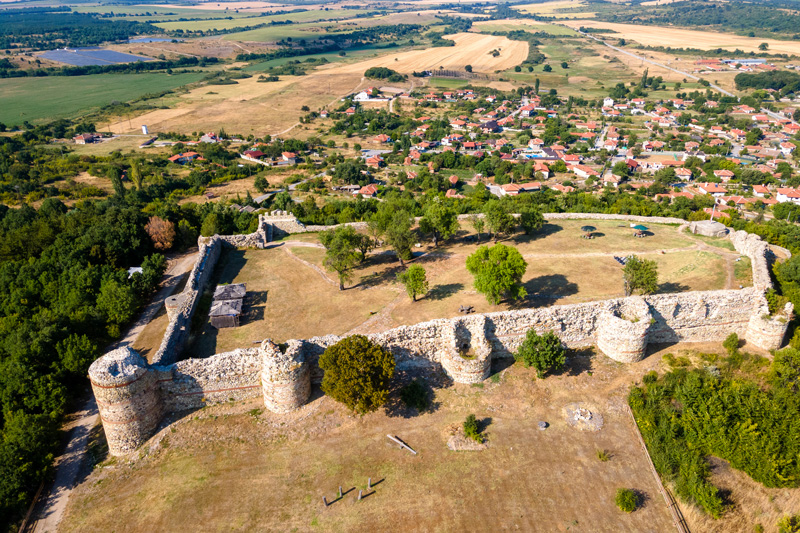
The birth of the Second Bulgarian Empire
During the summary of the history of Bulgaria, Peter and Asen in 1185 , Bulgarian nobles of Wallachian and Cuman origin, rebel against the Byzantines. Peter II declares himself tsar, also called Theodore Peter. The following year the Byzantines recognized Independent Bulgaria and Peter declared himself tsar of the Bulgarians, Vlachs and Greeks . The new Bulgarian state occupies the territory between the Black Sea, the Danube, the Balkans, part of Macedonia and the Morava valley; as well as controlling Wallachia and Moldavia . Tsar Kalojan joins the Papacy, taking the title of rex and not tsar. He thus started many wars against the Byzantines, then against the knights of the Fourth Crusade after 1204 . He conquers part of Thrace, the Rhodope Mountains and Macedonia. In 1205 , during the Battle of Adrianople , Kalojan defeated much of the Latin Empire, limiting his authority also thanks to the Hungarians and Serbs.
Under Ivan Asen II , Bulgaria again becomes a power on the territory, occupying present-day Albania and Belgrade. In 1235 the Orthodox patriarchate is restored , ending the union with the papacy, and Ivan Asen II, wise and humane, begins relations with Genoa and Venice , reducing Byzantine influence in the country. Tărnovo becomes an economic and religious center, considered the third Rome, while Constantinople fell. He extended the Bulgarian borders to the coasts of the Balkan peninsula, annexing Medea and tried until 1235 to besiege Constantinople, without success.
The Ottoman arrival and the decline of the Empire
At the end of the Asen dynasty, in 1257 , internal conflicts and Byzantine and Magyar attacks led to the decline of the empire’s power. Tsar Theodore Svetoslav only temporarily manages to bring prestige to the kingdom, because instability increases, as does the loss of territories. Thus began the peasant revolts led by Ivailo , a swineherd, who managed to defeat the tsar, ascending the throne. In the 14th century Bulgaria was weak however as the Ottoman Turks arrived from the south, landing in Europe in 1354 for the first time. The Second Bulgarian Empire was destroyed by factional divisions and the spread of Bogomilism.
The kingdom was divided into three: the Kingdom of Vidin , of Tărnovo and Despotate of Dobruja . Furthermore, other quasi-independent principalities fought among themselves, against the Byzantines, Sarbs, Genoese, Venetians and Magyars. The resistance the Ottomans encountered was weak and in 1362 they took Philippopoli , today Plovdiv, also conquering Sofia in 1382. The Ottomans in 1389 began to defeat the Serbs in the Battle of Kosovo Polje, occupying Tărnovo in 1393. The Kingdom of Vidin is taken in 1396, thus also ending the Second Bulgarian Empire.
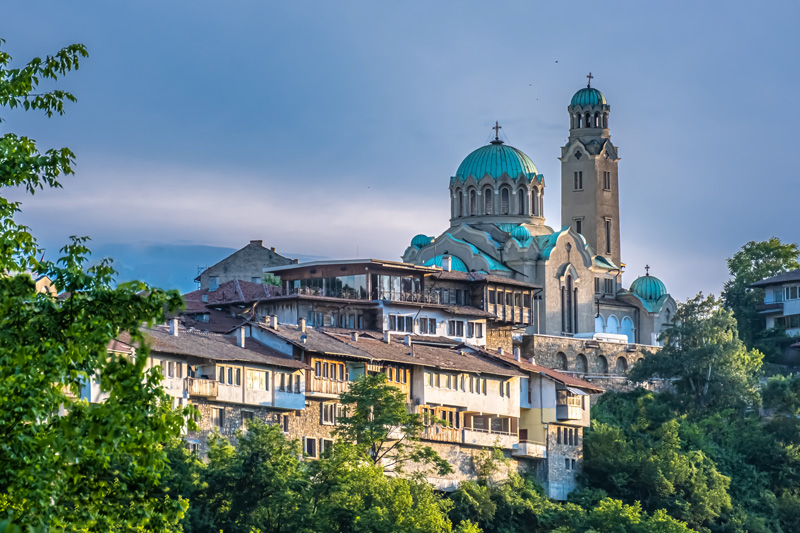
Ottoman Bulgaria
With the conquest of Tărnovo , capital of the Second Bulgarian Empire in 1393 during the history of Bulgaria in brief, the kingdom of Vidin also fell in 1396 following the Battle of Nicopolis . The Ottomans thus overcome the resistance and occupy the territory. To liberate the Balkans, Władysław III of Poland began the Polish-Magyar Crusade in 1444 , but the Turks were victorious in the Battle of Varna. The new authority destroys Bulgarian institutions, integrating the church into the ecumenical patriarchate of Constantinople . Many medieval fortresses were also destroyed, and many areas conquered by the Turks remained underpopulated until the 19th century .
With the Ottomans the territories of the Bulgarian Empire became the beilicate of Rumelia , based in Sofia and governed by a beylerbey. The territory was divided into sancaklar and included Macedonia, Thrace and Moesia. Under the sultanate , these areas had a feudal structure, further divided among the mulks , the Ottoman nobles. Christians were not asked to convert, but there are cases of Islamization especially in the Rhodopes . The converted Bulgarians, the Pomaks , adopted the customs of Islam and non-Muslims could not be part of the sultan’s army, except for child tribute . A custom that involved taking one in five children to train as a warrior, becoming the sultan’s elite corps.
The Ottoman decline
From the 17th century the Ottoman decline begins during the summary of the history of Bulgaria. The government weakens due to personal controls over different areas of the empire and the Balkan peninsula falls into anarchy at the beginning of the 19th century. This period is known in Bulgarian history summarized as kărdžalijstvo , a time when Turkish armies infested the territories. In many regions, farmers left the countryside to go to the cities, forests or hills.
Others towards Moldavia or beyond the Danube, in Wallachia or south of Russia. Cities such as Lovech, Karlovo, Gabrovo and Tryavna grew. The peasants’ lands belonged to the sultan and in the 19th century transport, trade and communications were improved. In 1834 the first Bulgarian industry opened in Sliven and between Ruse and Varna in 1866 we saw the first railway system in the country.
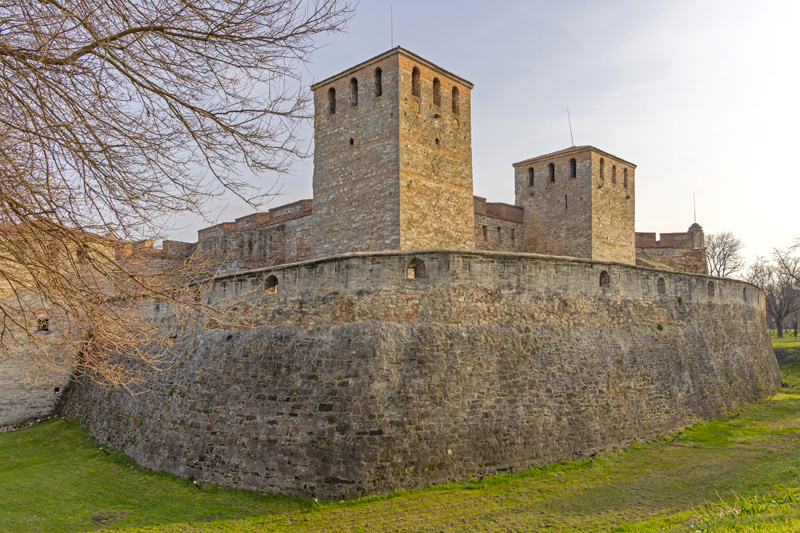
The Bulgarian Risorgimento
During the summary on Bulgarian history, the Ottoman decline allows for cultural revival, developing the ideology of national liberation and Bulgarian nationalism . It begins to emerge from the 19th century , influenced by Western ideals of nationalism and liberalism, especially after the French Revolution and through Greece following their revolt against the Ottomans in 1821. Bulgarians’ resentment of Greek control of the church was greater, along to the desire to revive the independent Bulgarian church. Antim I , following an edict from the sultan, became leader of the emerging nation. Constantinople’s reaction was excommunication, thus reinforcing the desire for independence. The struggle for the liberation of the Ottoman Empire begins with the creation of the Bulgarian Central Revolutionary Committee and the Internal Revolutionary Organization . Led by important figures in Bulgarian history, such as Vasil Levski .
In 1876, the April Uprising began in Bulgaria , poorly organized in the Plovdiv region and in the north, in the Sliven area and in Macedonia. The repression was brutally repressed by the Turkish irregular troops of the Bashi-Buzuk. Thousands were massacred. Outrage also comes from European liberals, launching campaigns against the Bulgarian horrors , supported by intellectuals in Europe. In 1876 this led to the Conference of Constantinople called by the great Powers, especially Russia. The Russian Empire thus declared war on the Ottomans in 1877. The Russians were joined by the Bulgarian and Romanian armies. The Ottoman army was finally defeated in 1878, at the Battle of Pleven in Shipka .
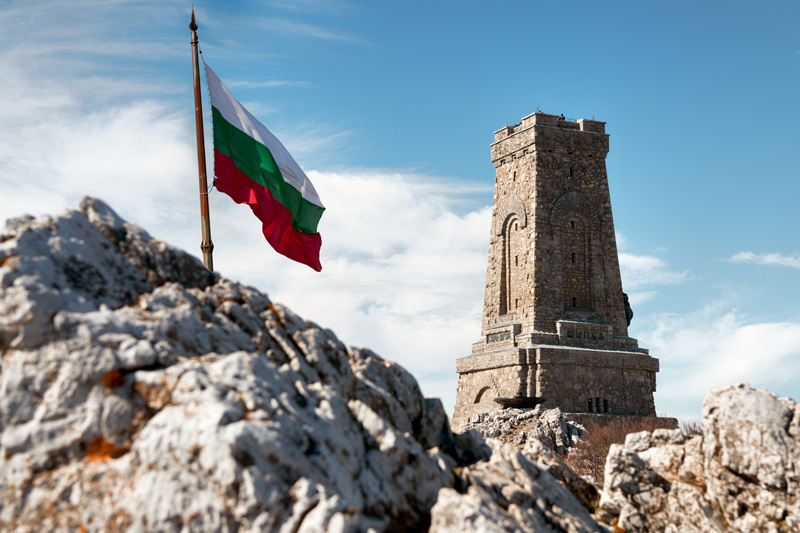
Independence and the Third Bulgarian State
On March 3, 1878 , the Treaty of San Stefano was signed , ensuring the independence of the Principality of Bulgaria, extending the territory to the Second Bulgarian Empire. To preserve the European balance and fearing Russia ‘s role in the Balkans, however, the European powers were reluctant. Thus, in 1878 the Treaty of Berlin was signed with Otto von Bismarck of Germany and Benjamin Disraeli of Great Britain, downsizing the Bulgarian state. Thus the smallest autonomous Bulgarian principality was created , between the Danube and the Balkans, with its seat in the old capital Veliko Tărnovo . This state remained under Ottoman sovereignty, but governed by a prince elected by Bulgarians, approved by Europeans.
Although they did not want a Russian prince, Alexander of Battenberg , nephew of Tsar Alexander II, was chosen. They also created Eastern Rumelia, an autonomous Ottoman province, thus leaving a large part of the Bulgarian population outside the borders. Thus in 1885 Eastern Rumelia declared union with the Bulgarian principality. Serbia and Greece , worried about the expansion of the state, lead to Serbia’s declaration of war on Bulgaria. The Bulgarian army emerged victorious in Slivnica , thanks also to Austrian diplomatic intervention, ending with the unification of Eastern Rumelia to the principality.
Bulgaria after unification
Following the war during Bulgaria’s brief history, the country emerged from Ottoman rule poor and underdeveloped , with few industries. The main political philosophy was rural , with country life and peasants organizing themselves into a party, founding the Bulgarian Agrarian Union in 1899. France contributed from 1878 to 1933 to the country’s growth, founding research institutes, Catholic schools and libraries , in 1888 the University, called in 1904 Sofia University : a hotbed of German and Russian deologies . However, the Macedonians have been using the Bulgarian territories since 1894 for agitation for Ottoman independence and, in 1904, the revolt broke out , brutally suppressed.
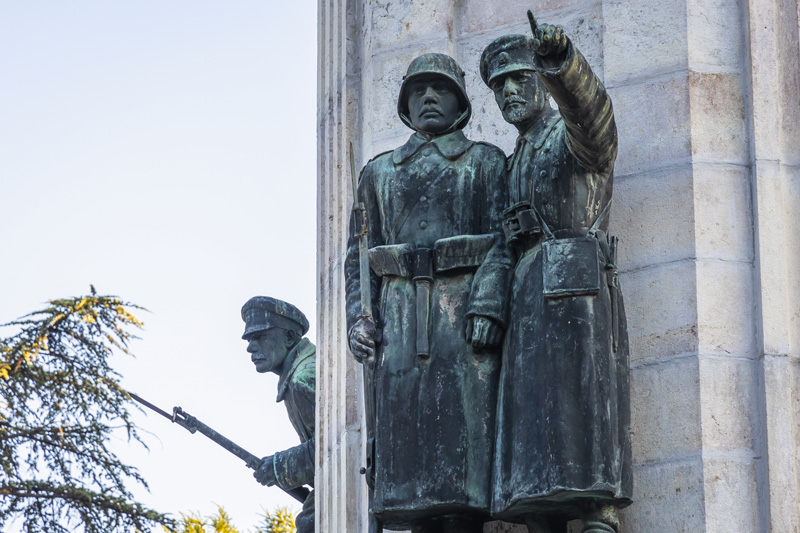
The Balkan Wars
After Bulgaria’s independence during the summary of its history, the country quickly militarized , thus taking the name Balkan Prussia . The national desire was to retract the Treaty of Berlin militarily. The Great Powers had divided the Balkan territories without regard for the ethnic groups present , bringing discontent to all the countries in the area. Ivan Gešov, prime minister, formed an alliance with Greece and Serbia against the Ottoman Empire in 1911 , launching a joint attack. In 1912 Bulgaria and Serbia secretly signed a treaty and also with Greece later and then with Montenegro , deciding on the vague partition of Thrace and Macedonia. With the Ottomans’ refusals to the requested reforms, the First Balkan War broke out in October 1912 .
It ends with the Allies defeating the Ottomans , taking control of most of its European territories. Bulgaria suffered numerous losses, such as territory, but the other allies refused to cede any. They also ask to review the pre-war agreements , as the Bulgarians could not take Adrianople without the Serbs. In 1913 Greece and Serbia formed an alliance against Bulgaria. Prime Minister Nikola Pašić offers Thrace to Greece, demanding to keep Bulgaria away from Macedonia, thus violating previous agreements. Bulgarian Tsar Ferdinand I , pushed by Austria-Hungary and Germany, declares war on Greece and Serbia starting the Second Balkan War: the war between the allies .
The Allied War
At the beginning of the Second Balkan War, Greeks and Serbs took refuge on the western borders, later reversing the situation and leading the Bulgarians to retreat. In the Battle of Bregalnica there were the greatest number of losses and, shortly afterwards, Romania also attacked Bulgaria from the north and the Ottomans from the south-east. The Ottomans, in fact, saw a chance to recover some of the lost territories. Having definitively lost the war, Bulgaria renounces Macedonia, the Ottomans regain Adrianople and Romania the southern Dobruja.
The Bulgarian state was deeply wounded by these two Balkan wars, stopping the period of growth and causing many deaths. The push to recover Macedonia, however, was always very strong.
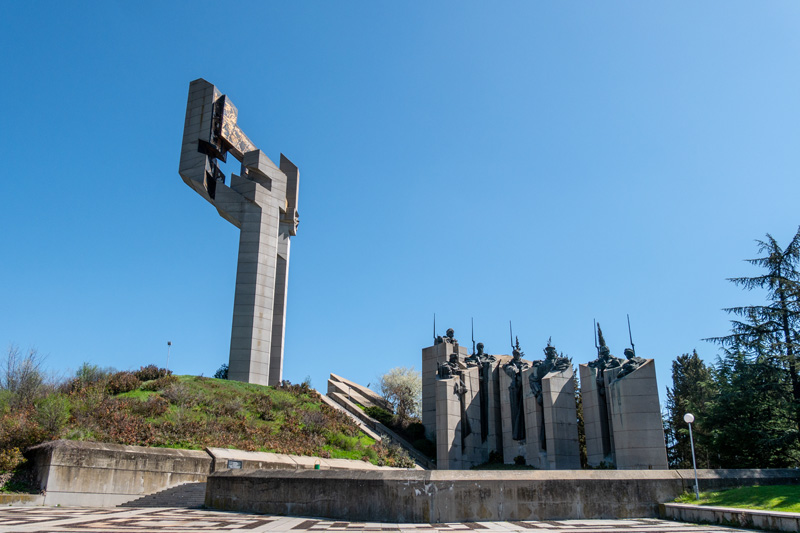
The World Wars
After the Balkan wars during the summary of Bulgaria’s history, public opinion comes into conflict with Russia and the Great Powers. In fact, the idea was that nothing had been done to help the Bulgarians. Vasil Radoslavov aligns the government against Austria-Hungary and Germany, allying himself with the historic Ottoman enemies.
WWI
During the first year of the First World War, Bulgaria stayed out, but Austria-Hungary and Germany needed help to defeat Serbia and strengthen the eastern front against Russia. However, Bulgaria asked to have more territories, especially Macedonia, but the Austro-Hungarian empire did not give in. The Berlin government then intervenes , starting negotiations, offering other smaller compensation. The Tsar then decided to go to war in 1915 , following the promise that after the war Bulgaria would have dominion over the Balkans, and declared war on Serbia. As a result, Italy, France and Great Britain declared war on her in turn. Allying with Austria-Hungary and Germany, Bulgaria took Skopje and much of Macedonia, and Romania’s Dobruja in 1916.
Serbia was then conquered . In 1917 Bulgaria, with its large army, inflicted heavy losses on Great Britain in the battle of Doiran , on France in that of Monastir, on the brawlers in Dobrich and on the Romanians during the battle of Turtucaia. Being allied with the Muslim Ottomans, this war also creates great discontent among the Bulgarian people. Aleksandăr Stambolijski , leader of the Agrarian Party, was imprisoned as an opponent and, in 1917, the Russian revolution was also felt in Bulgaria. Anti-monarchist and anti-war sentiments stir, leading to the resignation of Radoslavov’s government and the army mutiny in Stambolijski .
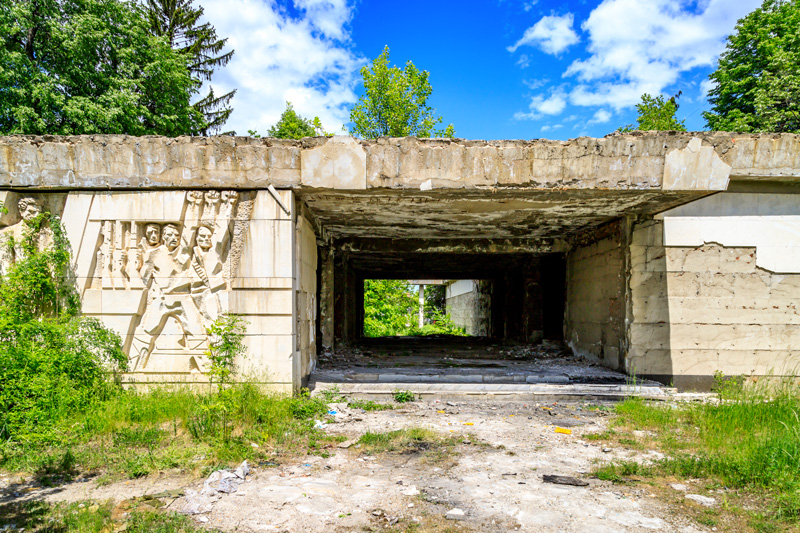
The period between the two wars
Ferdinand I, in 1918, abdicated for his son Boris III , mitigating the anti-monarchist tendencies. In 1919 the Treaty of Neuilly was signed and Bulgaria ceded the Aegean coast to Greece , recognizing the Kingdom of Serbs, Croats and Slovenians: later Yugoslavia . Furthermore, he ceded to him the Macedonian territories taken in the war, giving Dobruja back to Romania. Furthermore, to repay the war, he reduces his army. A period known as the second national catastrophe . In 1920, during the elections, the Bulgarian National Agrarian Union gains a majority and Aleksandăr Stambolijski forms the first Bulgarian peasant government. Against the backdrop of numerous problems and social conflicts, he implemented some reforms and, in 1923, signed an agreement with the Kingdom of Serbs, Croats and Slovenians, recognizing the borders and suppressing the Internal Macedonian Revolutionary Organization.
This leads to discontent and in 1923 a coup d’état in which Stambolijski is assassinated. Supported by the army and VMRO, Aleksandăr Cankov takes power and begins a repression against communists and agrarians. The Tsar, in 1926, convinces Cankov to resign after the Stray Dog War , a brief Greco-Bulgarian crisis. With Andrej Ljapčev , he installs a moderate government, banishing the communists. The Popular Bloc won the elections in 1931 and in 1934 another coup d’état took away its power, starting an authoritarian military regime led by Kimon Georgiev. The tsar, a year later, restores the neutral regime. Bulgaria begins to move closer to fascist Italy and Nazi Germany .
Bulgaria’s role in World War II
In 1939 , the Second World War broke out . The government of Bulgaria is led by Bogdan Filov , who wants to maintain neutrality. He hopes to retake occupied territories without military action, but only with diplomatic conclusions . The position in the Balkans, however, made the external pressure very strong, even if Turkey signed a non-aggression pact with Bulgaria. Restitution of Dobruja is negotiated in 1940 with the Treaty of Craiova , supported by the Axis. Bulgaria, during the summary of its history, was forced to join the Axis in war in 1941 . Boris III, threatened with military conflict, joins the fascist bloc . The king, however, did not hand over the Bulgarian Jews to the Nazis, saving many lives.
Furthermore, Bulgaria did not participate in the Nazi invasion of the Soviet Union in 1941, but the Bulgarian navy was still involved in battles in the Black Sea with the Soviet fleet. The Bulgarians were forced by the Nazis to declare war on the US and UK, leading to the bombing of Sofia by the Allies. In 1944 Romania left the Axis and declared war on Germany, allowing the Soviets to reach Bulgaria. The same year the Soviet Union invaded Bulgaria, occupying the north of the country, Burgas and Varna. Bulgaria then declares war on Germany and a coup d’état leads to a government formed by the Fatherland Front. The Red Army enters Sofia in September. During the military operations in Kosovo and Stracin, the Bulgarians clashed victorious several times with the Nazi army.
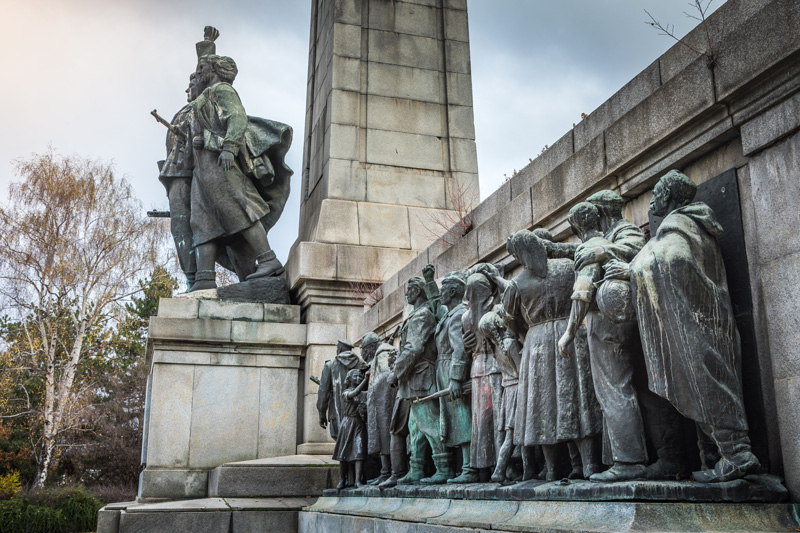
The People’s Republic of Bulgaria
From 1946 to 1989 during the history of Bulgaria summarized, the country was the People’s Republic of Bulgaria under the Bulgarian Communist Party ; since 1990 Bulgarian Socialist Party. By 1923 Dimitrov was in exile in the Soviet Union, but not yet a puppet. Blamed in 1933 for the Reichstag fire , he then led the Comintern for the Popular Front. Close to the communist leader Tito , he thought that Yugoslavia and Bulgaria should form a Slavic federation . Stalin was not of the idea, also suspecting that Dimitrov’s death was not an accident.
This leads to the execution of Deputy Prime Minister Trajčo Kostov . Kolarov died in 1950 and power passed to Vălko Červenkov , an extremist Stalinist. The Bulgarian Stalinist period lasts about five years. Agriculture was collectivized, peasant revolts were repressed, work camps were established and the church came under state control. Relations with the USA were also interrupted in 1950 and the Turks were persecuted , reopening the problems with Greece and Yugoslavia. After Atalin’s death, Chervenkov was deposed in 1954 and replaced by Todor Živkov , supported by Nikita Khrushchev, remaining prime minister until 1956 followed by Anton Yugov .
Communist Bulgaria
Zhivkov was the longest-serving communist secretary of Eastern Europe, from 1958 to 1989 . In 1965, due to the regime’s excessive subordination to the Soviet Union, it led to a pro-Chinese coup . Organized by generals Cvyatko Anev and Ivan Todorov-Gorunja, which failed. In 1971 Živkov was appointed President of the Council of State and Stanko Todorov as Prime Minister. Živkov consolidates his power and offers absolute loyalty to the USSR , receiving economic support and developing industry and culture. However, industrialization leads to pollution of the Danube and problems with nuclear power plants, as in Kozloduj .
One of the regime’s main problems with foreign policy, however, was the Pirin region , claimed by Macedonia. In the 1960s , Zhivkov began experimental free-market political reforms. Zhivkov’s daughter Lyudmila brought Bulgarian culture, art and heritage to the world, beginning in the 1980s to eradicate the Turkish community. This led to the emigration of many Bulgarian Turks to Türkiye, also leading to a decline in agricultural production.
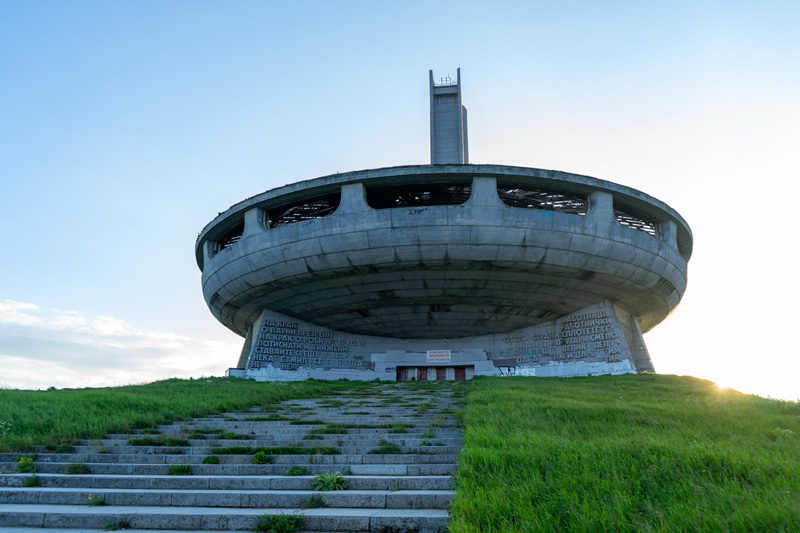
The 90s
During the summary on the history of Bulgaria in the 1990s , communism and their leader had weakened at the end of the 1980s due to social changes and the demands of the people. Even before Mikhail Gorbachev ‘s reforms were perceived. Due to the ecological issue , there were many demonstrations in Sofia, resulting in political reform. Živkov was replaced by Petăr Mladenov and, in 1990, the Party renounced its monopoly and then held the first free elections since 1931, won by the moderates of the Communist Party, called the Bulgarian Socialist Party . In 1991, the new constitution was born , with a president elected by the people and with weak powers, as well as with a prime minister.
For post-communist countries, the transition to capitalism is difficult . The anti-communists of the Union of Democratic Forces come to government from 92 to 94, developing the privatization of land and industries, failing, and the socialists are seen as defenders of the people and the poor against the abuses of the free market . The failure of the anti-communists allows Žan Videnov to take power in 1995 . Difficulties, however, brought Petăr Stojanov of the UDF to power in 1997 .
I 2000
During our summary of Bulgaria history we arrive at the 2000s, when in 2001 , Tsar Boris II’s son, Simeon of Saxe-Coburg-Gotha , former Bulgarian head of state, wins the elections. Simeon II’s National Movement, the tsar’s party, follows a pro-Western policy , thus allowing the country to join NATO in 2004 . The tsar’s popularity, however, did not last long. In 2005 the Bulgarian Socialist Party won , but without the votes needed to form the government, a coalition was created between the PSB, the NDSV and the MDL.
Divided by different ideologies, they united for the reforms necessary to allow Bulgaria to join the European Union in 2007 . In 2009, Bojko Borisov came to power with the center-right party. After 1989, there were many economic difficulties in the country, such as corruption problems, leading to mass migration . Economic conditions are gradually improving, although migration remains constant and progress is limited, but education is developing.
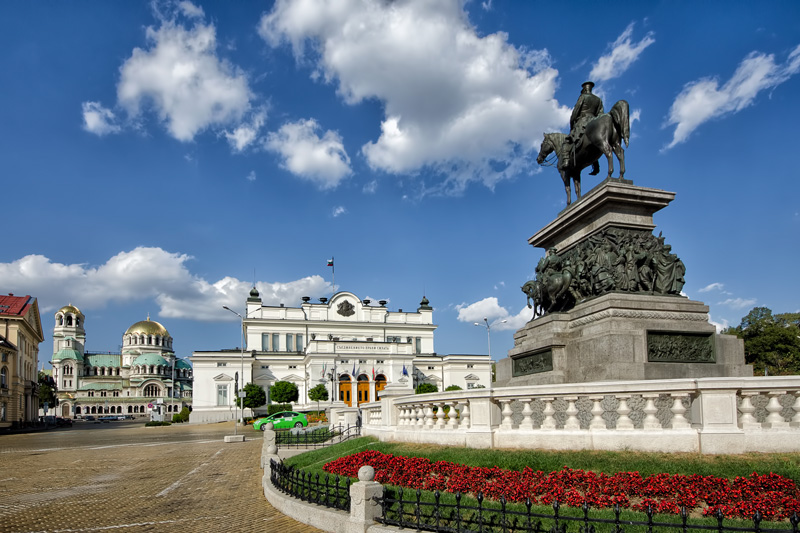
Bulgaria Today
Today, the Republic of Bulgaria is a member of the European Union in the eastern part of the Balkan Peninsula . Its government is a parliamentary democratic representative republic. The prime minister is also the head of government and the system is multi-party. The government has executive power, while legislative power is in the hands of the government and the National Assembly. The currency is the Bulgarian lev , due to high inflation it has not adopted the euro. Its territory is varied, from the coasts of the Black Sea , to the mountainous areas to the banks of the Danube River .
Thanks to Bulgaria’s history, a unique mix of cultures is found here , including Greek, Slavic, Persian and Ottoman, reflected in its incredible cultural landscape. In fact, we can find a well-defined identity of a proud people, among music, dances, traditional costumes, their cuisine and artisanal products. There are also activities and things to do and see for all tastes, from its spa areas , to nature reserves , seaside areas, ski resorts and monuments that are symbols of various eras. Bulgaria is an increasingly popular travel destination and is eager to welcome travelers!
Read also: Bulgarian Cuisine – Typical Bulgarian Dishes and Bulgarian Food




